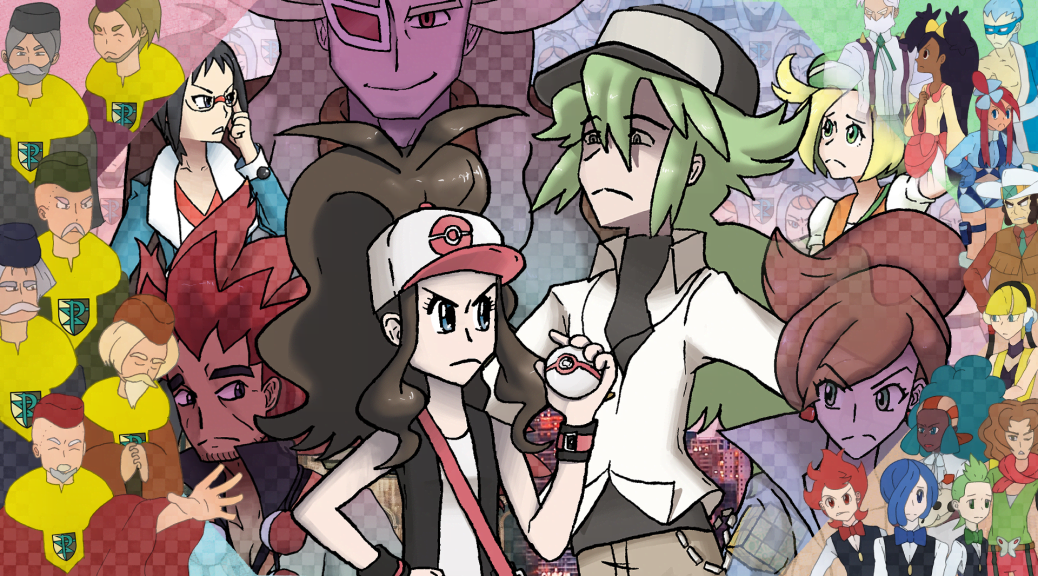Part III: The Cast of Unova
Part III of our tribute to Pokémon Black and White focuses on each of the games’ many characters.

Part III: The Cast of Unova
Hilda and Hilbert | Juniper | Bianca | Cheren | The Gym Leaders | The Elite Four | Alder
Team Plasma Grunts | Concordia and Anthea | The Seven Sages | The Shadow Triad | Ghetsis | N
The Shadow Triad
You came here because somebody manipulated you,” says a grunt stationed in Chargestone Cave. Who could that have been?
We all like to believe we are above manipulation—that our choices are our own, made with intentions that we’re entirely aware of. But where do those intentions come from? Where, or when, did we learn the meaning of things—things that shape our understanding and, subsequently, our decisions? And were the things we learned entirely accurate—truthful—to begin with?
After defeating the grunt, he explains that “Ghetsis of the Seven Sages supports our king, and Ghetsis has three subordinates… They are the Shadow Triad!”
On a meta level, the game developers are the ones who control the player to the degree that they deem appropriate. The decision to have a Galvantula nest blocking the entrance to the Chargestone Cave until after you defeat Clay was a choice made based on a variety of factors, including story pacing and game balance. But the narrative decisions they made also play into Black and White’s themes: N confirms to you that the Shadow Triad were the ones who planted the Galvantula nest to block your progression. The Shadow Triad controlled your advancement without you knowing, just as we aren’t always aware of our external influences as we go about our daily lives.
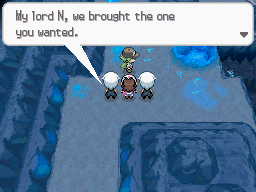 The Shadow Triad are first introduced in that very cave—the cave that most clearly ties Black and White’s themes to Platonic philosophy. It’s highly fitting, then, that their purpose to serve as a clear representation of how Ghetsis controls the metaphorical shadows of Plato’s cave allegory.
The Shadow Triad are first introduced in that very cave—the cave that most clearly ties Black and White’s themes to Platonic philosophy. It’s highly fitting, then, that their purpose to serve as a clear representation of how Ghetsis controls the metaphorical shadows of Plato’s cave allegory.
The comparison to the allegory is most blatant in N’s upbringing: literally sheltered away from all outside influence, Ghetsis only showed N what Ghetsis wanted him to see. But the Shadow Triad exist to confirm that Ghetsis’s manipulation extends far beyond his cruel upbringing of N. Indeed, besides the look into hand symbolism in the opening cinematic of the games, the first time Ghetsis’s deception is hinted at is in the Dream Yard. When Musharna appears before the Team Plasma Grunts in the form of Ghetsis, they cower in fear, letting it slip that Ghetsis does indeed attempt “to trick [people] with speeches.”
On a very literal level, Ghetsis controlling these inhuman shadows is a testament to the frightening level of his influence and power. But on a deeper level, they represent Ghetsis’s control of everything that happens during the course of Black and White. All shadows cast over Unova were cast by him, treating the entire region as his cave to control—you and your progression included. For instance, planting the Galvantula nest to block your advance allowed Team Plasma the opportunity to convene within the cave so you would be forced to confront them as Ghetsis desires. N confirms this, explaining that you must tackle Team Plasma there because “Ghetsis wants to see what kind of Pokémon Trainer you really are.” Additionally, N explains in Chargestone Cave that Ghetsis researched you and your friends—Cheren and Bianca—with help from the Shadow Triad, despite this location being the very first time you’ve seen or heard about them. The implication that you’ve been unknowingly followed—and will continue to be followed—by the Shadow Triad is nothing short of disturbing.
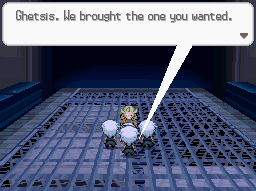 Everything the Shadow Triad does is for the sake of conveying additional facets of Ghetsis’s character. They are nothing more than his literal and thematic props. On Marvelous Bridge they claim to “have always been and will always be the loyal servants of Ghetsis” since the day he saved their lives. What Ghetsis saved them from we do not know, but by knowing that they dedicate themselves entirely to him, we understand they don’t have a real existence outside of him. This makes perfect sense on the surface level—they are his shadows, after all. But it’s not only Black and White that would have you believe that there’s more than just the surface level to explore: Plato would, as well.
Everything the Shadow Triad does is for the sake of conveying additional facets of Ghetsis’s character. They are nothing more than his literal and thematic props. On Marvelous Bridge they claim to “have always been and will always be the loyal servants of Ghetsis” since the day he saved their lives. What Ghetsis saved them from we do not know, but by knowing that they dedicate themselves entirely to him, we understand they don’t have a real existence outside of him. This makes perfect sense on the surface level—they are his shadows, after all. But it’s not only Black and White that would have you believe that there’s more than just the surface level to explore: Plato would, as well.
Plato’s theory of Forms explains what it is that the escaped prisoner really sees after escaping the confinement of the cave: “Forms,” or the “true reality.” In our own existence, what we see isn’t always what we get. More than just the projected shadows, the things we perceive aren’t as ideal or true as they could be—a handful of blueberries will contain a variety of textures and even flavors ranging from sweet to sour, for example. Some could be at their ripest or in their infancy, cut open, nibbled on by a wild animal, or they could be old and moldy. But what makes them all “blueberries?”
According to Plato, Forms are “abstract, perfect, unchanging concepts or ideals that transcend space and time.” The “essence” of all things and concepts exists in the “world of Forms,” a non-physical plane where the “perfect ideal” of each thing and concept resides, with each essence being a “Form.”1 In the case of our blueberries, the Form of blueberries—we can call it “blueberry-ness”—that makes all blueberries what they are would exist in this plane, along with the Forms of every other thing and concept.
But it’s the physical things and concepts that have Forms. The shadows of these things and concepts don’t have Forms—they are, in essence, nothing, just as the Shadow Triad are hardly characters in their own right. Shadows must be projected from somewhere else, off of something else, and those shadows are affected not only by the ones controlling them, but by our own senses and understanding. When you perceive a blueberry, you may flinch in disgust if you dislike them, or you may look on in interest if you enjoy them. You may not even realize you’re responding the way you are based on your past experiences because it comes so naturally.
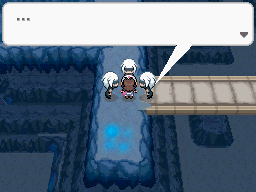
Another natural reaction comes from the sudden appearances of the Shadow Triad, manifesting as if out of nothing and surrounding you. Although Black and White feature a dynamic camera both in battle and in the overworld, the sprites and environments are still predominantly presented in the series’s traditional top-down perspective. With only two sides visible at once on most objects, everything can be boiled down to fit neatly into square “tiles” or a “grid.” This makes it easy to visualize something as completely surrounded when it’s encircled on all four of these hypothetical sides. Why, then, would there only be three shadows? It almost appears as though you can escape their grasp because one of your “sides” will always be open.
On a basic level, the Shadow Triad always strategically spawn so that you have no real route of escape. In the Chargestone Cave, they surround you so that you may flee to the south, but it leads to a dead end, meaning escape is actually impossible. In Icirrus City, they corner you with your back to the Gym, and on Tubeline Bridge they appear behind you, with Ghetsis in front. These are clever details, but wouldn’t have been necessary had there been four shadows, meaning the choice of three was intentional. The three shadows serve two purposes: one concerns Ghetsis’s use of number motifs which will be explored later, and the other pertains again to the theory of Forms.
The “third man argument,” or “third man objection,” is the biggest objection to Plato’s theory of Forms. Advanced by Aristotle, the argument posits that the Forms must naturally be the thing or idea it represents, meaning it won’t only “be the property that it is, but it will also have that property” itself.2 Aristotle uses humans in his example: the Form of a human is “human-ness,” but if “human-ness” itself is a human, it needs its own Form to connect it back to the physical human. We could call this “super-human-ness,”3 the “third man” in the third man argument. But this would keep going infinitely, as the “super-human-ness” would again need its own Form to connect it back to the previous Form and the physical human, and so on and so forth.
Although the existence of this objection to the theory of Forms will become more pertinent in our discussion of N later, its naming alone serves to reinforce the intentionality behind all the facets of the Shadow Triad. Even if the theory of Forms isn’t flawless, the shadows that we perceive are at once both frighteningly real, with the power to control us without our immediate knowledge, and nothing at all.
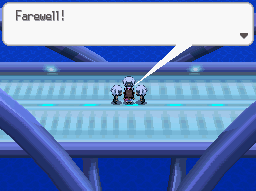
There’s something inherently frightening about characters who don’t battle yet are able to control you in a game in which control is decided through the winner of a Pokémon battle. Yet even this ties back in with the theory of Forms and the allegory of the cave: when we step out of the cave, we don’t really dispel the shadows.
“Never shall we meet again,” one of the shadows tells you before they all disappear. And they are right: you never see the Shadow Triad again. You now see things for how they truly are, just as someone who leaves the metaphorical cave can see things for their true, ideal Form. You know the dichotomy of Team Plasma and revealed the true “Form” of Ghetsis’s plan.
But shadows will continue to exist, just as the Shadow Triad remain at large even after you round up the remaining Seven Sages. They insist that “Ghetsis’s ambitions will never cease,” because Ghetsis’s ambitions represent the relentless attempts made by people to control the shadows in the world around us.
Perhaps you have become wiser to their—rather, Ghetsis’s—schemes, but there will always be others who will fall victim to their invisible influence.
